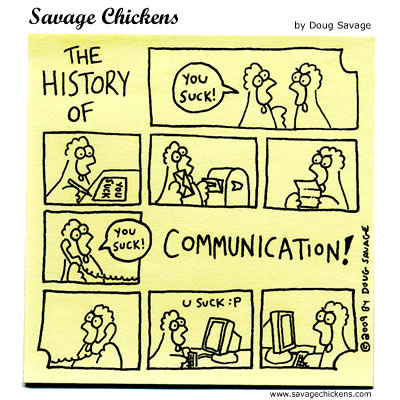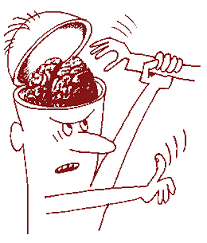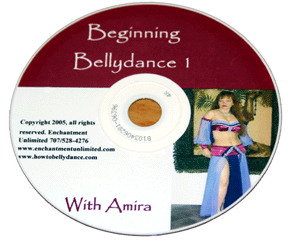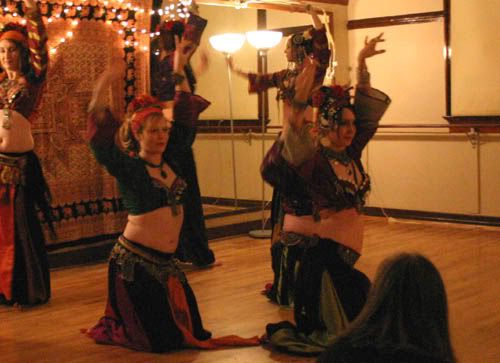From my background in theater and dance, to a life seeped in bellydance and dance in general full-time, I have learned that one of the most powerful methods of showing emotion in performance is having a story firmly in mind as you perform. Just saying "I am going out there to have fun and smile," doesn't quite have the same impact as coming up with a more detailed motivation or imagined goal in mind when you take the stage. So You Think You Can Dance liberally uses themes, props, and elaborate stories to create their unique dances, which is inspiring. We, too, can be guided by a story through the entire creative process, which can inform not only our movement and emoting on stage, but also costume and musical choices as well to support the story further. Though I would caution that one must be careful at becoming too literal or trite.
After all, a large cross-section of the recent vaudeville-inspired theatrical-circus-theme craze has been disappointingly unbalanced: Over-storied, over-costumed, over-propped, and under-danced. The dance is the central and most important part, and the story and any trappings built around it should support and supplement the emotional content and skilled execution of the dance itself. A really great dance can be performed with the dancer wearing a plain white tee shirt, or something similarly mundane, and can still clearly communicate emotion.
So how does one create a story? Soloists have an easier time at this because the stories need not have a universal and shared emotional meaning among a group, but instead can be something very personal to them alone. (For example, Sa'Elyssa's "For My Grandmother"--a dance to honor her grandmother who had passed away--reduced me to tears.) But with some thought and discussion groups can create a story and stage their piece with a collective image in mind to help channel their emotional energies. My last troupe did this on many occasions with great effect. Our "Home" piece was one that is lovingly remembered not only by the audiences that saw it, but we who danced it. The story we built into it was very very personal to our dance family and surrounded universal feelings of loss and fear, friendship, and of course as the song name and lyrics reveal, the feeling of being home. We didn't have any sort of intro at most performances of it, and we did not costume or set a backdrop or props of any kind, so there was not always an opportunity to lead the audience into our story with any kind of explanation. The only cues were our physical selves--the way we staged our movement among and with one another, the way we felt as we imagined our story when dancing it, and the way our faces and bodies communicated our thoughts and feelings as we performed came through for our audiences, who sometimes were brought to tears without knowing quite why it impacted them so profoundly. Of course tears aren't the only way we would hope to have our audiences manifest their appreciation of what we do, but it sure is a powerful one!
Another method to add further depth to your audience interaction is to put characters of your story in the audience. Planting archetypes in your mind and then acting as if you are seeing them and playing to them when you dance can have great effect. Say you plan to find your new best friend to the left of the stage, your ex-boyfriend you are showing off for to the right of the stage, and your proud mother in the center. Find people in the audience and fix them with your eyes and intention and dance for those imagined characters and see if it doesn't change the way you move and emote!
What other ways do you build story and character into your performances?
The dance itself--the body, the face, the movement--not costume or music or props, should always communicate the story first and foremost.
After all, a large cross-section of the recent vaudeville-inspired theatrical-circus-theme craze has been disappointingly unbalanced: Over-storied, over-costumed, over-propped, and under-danced. The dance is the central and most important part, and the story and any trappings built around it should support and supplement the emotional content and skilled execution of the dance itself. A really great dance can be performed with the dancer wearing a plain white tee shirt, or something similarly mundane, and can still clearly communicate emotion.
So how does one create a story? Soloists have an easier time at this because the stories need not have a universal and shared emotional meaning among a group, but instead can be something very personal to them alone. (For example, Sa'Elyssa's "For My Grandmother"--a dance to honor her grandmother who had passed away--reduced me to tears.) But with some thought and discussion groups can create a story and stage their piece with a collective image in mind to help channel their emotional energies. My last troupe did this on many occasions with great effect. Our "Home" piece was one that is lovingly remembered not only by the audiences that saw it, but we who danced it. The story we built into it was very very personal to our dance family and surrounded universal feelings of loss and fear, friendship, and of course as the song name and lyrics reveal, the feeling of being home. We didn't have any sort of intro at most performances of it, and we did not costume or set a backdrop or props of any kind, so there was not always an opportunity to lead the audience into our story with any kind of explanation. The only cues were our physical selves--the way we staged our movement among and with one another, the way we felt as we imagined our story when dancing it, and the way our faces and bodies communicated our thoughts and feelings as we performed came through for our audiences, who sometimes were brought to tears without knowing quite why it impacted them so profoundly. Of course tears aren't the only way we would hope to have our audiences manifest their appreciation of what we do, but it sure is a powerful one!
Another method to add further depth to your audience interaction is to put characters of your story in the audience. Planting archetypes in your mind and then acting as if you are seeing them and playing to them when you dance can have great effect. Say you plan to find your new best friend to the left of the stage, your ex-boyfriend you are showing off for to the right of the stage, and your proud mother in the center. Find people in the audience and fix them with your eyes and intention and dance for those imagined characters and see if it doesn't change the way you move and emote!
What other ways do you build story and character into your performances?































